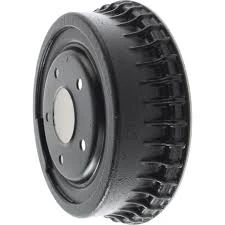
-
 Afrikaans
Afrikaans -
 Albanian
Albanian -
 Amharic
Amharic -
 Arabic
Arabic -
 Armenian
Armenian -
 Azerbaijani
Azerbaijani -
 Basque
Basque -
 Belarusian
Belarusian -
 Bengali
Bengali -
 Bosnian
Bosnian -
 Bulgarian
Bulgarian -
 Catalan
Catalan -
 Cebuano
Cebuano -
 Corsican
Corsican -
 Croatian
Croatian -
 Czech
Czech -
 Danish
Danish -
 Dutch
Dutch -
 engleski
engleski -
 Esperanto
Esperanto -
 Estonian
Estonian -
 Finnish
Finnish -
 French
French -
 Frisian
Frisian -
 Galician
Galician -
 Georgian
Georgian -
 German
German -
 Greek
Greek -
 Gujarati
Gujarati -
 Haitian Creole
Haitian Creole -
 hausa
hausa -
 hawaiian
hawaiian -
 Hebrew
Hebrew -
 Hindi
Hindi -
 Miao
Miao -
 Hungarian
Hungarian -
 Icelandic
Icelandic -
 igbo
igbo -
 Indonesian
Indonesian -
 irish
irish -
 Italian
Italian -
 Japanese
Japanese -
 Javanese
Javanese -
 Kannada
Kannada -
 kazakh
kazakh -
 Khmer
Khmer -
 Rwandese
Rwandese -
 Korean
Korean -
 Kurdish
Kurdish -
 Kyrgyz
Kyrgyz -
 Lao
Lao -
 Latin
Latin -
 Latvian
Latvian -
 Lithuanian
Lithuanian -
 Luxembourgish
Luxembourgish -
 Macedonian
Macedonian -
 Malgashi
Malgashi -
 Malay
Malay -
 Malayalam
Malayalam -
 Maltese
Maltese -
 Maori
Maori -
 Marathi
Marathi -
 Mongolian
Mongolian -
 Myanmar
Myanmar -
 Nepali
Nepali -
 Norwegian
Norwegian -
 Norwegian
Norwegian -
 Occitan
Occitan -
 Pashto
Pashto -
 Persian
Persian -
 Polish
Polish -
 Portuguese
Portuguese -
 Punjabi
Punjabi -
 Romanian
Romanian -
 Russian
Russian -
 Samoan
Samoan -
 Scottish Gaelic
Scottish Gaelic -
 Serbian
Serbian -
 Sesotho
Sesotho -
 Shona
Shona -
 Sindhi
Sindhi -
 Sinhala
Sinhala -
 Slovak
Slovak -
 Slovenian
Slovenian -
 Somali
Somali -
 Spanish
Spanish -
 Sundanese
Sundanese -
 Swahili
Swahili -
 Swedish
Swedish -
 Tagalog
Tagalog -
 Tajik
Tajik -
 Tamil
Tamil -
 Tatar
Tatar -
 Telugu
Telugu -
 Thai
Thai -
 Turkish
Turkish -
 Turkmen
Turkmen -
 Ukrainian
Ukrainian -
 Urdu
Urdu -
 Uighur
Uighur -
 Uzbek
Uzbek -
 Vietnamese
Vietnamese -
 Welsh
Welsh -
 Bantu
Bantu -
 Yiddish
Yiddish -
 Yoruba
Yoruba -
 Zulu
Zulu
feb . 16, 2025 01:53
Povratak na listu
drum brakes not working
Experiencing issues with drum brakes can be both frustrating and concerning, especially when they're crucial to vehicle safety. Understanding the anatomy of drum brakes and identifying potential malfunction causes can ensure that you address these problems efficiently.
Contamination of the brake drum or shoes can also lead to performance issues. Grease or brake fluid on the components can cause the brakes to slip rather than grip. It is important to keep these components clean and free from contamination. Cleaning with an appropriate brake cleaner can rectify this issue, returning the brakes to their intended efficiency. Rust and corrosion pose significant threats, especially in areas with high humidity or road salt usage in winter months. Corrosion can cause the drum or other components to seize, impacting their function. Regular inspections can help detect early signs of rust, and applying anti-corrosive treatments can offer protection. Replacing severely corroded parts is sometimes the only solution to restore full functionality. For those modifying or restoring vehicles, selecting high-quality, compatible replacement parts is crucial. Aftermarket parts may not always meet the original equipment manufacturer (OEM) specifications, resulting in suboptimal performance. Consulting with automotive professionals or conducting thorough research on part compatibility ensures that you are choosing the best options for your vehicle. Communicating with a certified mechanic when addressing drum brake issues is advisable, as their expertise ensures accurate diagnosis and repairs. They can offer insights into the latest repair techniques and compatible parts replacements, adding a layer of assurance to the process. By understanding drum brake components and potential issues, car owners can effectively manage and mitigate these problems, ensuring safety and longevity. Regular maintenance, prompt attention to issues, and utilizing professional services safeguard against vulnerabilities in drum brake systems.


Contamination of the brake drum or shoes can also lead to performance issues. Grease or brake fluid on the components can cause the brakes to slip rather than grip. It is important to keep these components clean and free from contamination. Cleaning with an appropriate brake cleaner can rectify this issue, returning the brakes to their intended efficiency. Rust and corrosion pose significant threats, especially in areas with high humidity or road salt usage in winter months. Corrosion can cause the drum or other components to seize, impacting their function. Regular inspections can help detect early signs of rust, and applying anti-corrosive treatments can offer protection. Replacing severely corroded parts is sometimes the only solution to restore full functionality. For those modifying or restoring vehicles, selecting high-quality, compatible replacement parts is crucial. Aftermarket parts may not always meet the original equipment manufacturer (OEM) specifications, resulting in suboptimal performance. Consulting with automotive professionals or conducting thorough research on part compatibility ensures that you are choosing the best options for your vehicle. Communicating with a certified mechanic when addressing drum brake issues is advisable, as their expertise ensures accurate diagnosis and repairs. They can offer insights into the latest repair techniques and compatible parts replacements, adding a layer of assurance to the process. By understanding drum brake components and potential issues, car owners can effectively manage and mitigate these problems, ensuring safety and longevity. Regular maintenance, prompt attention to issues, and utilizing professional services safeguard against vulnerabilities in drum brake systems.
Prev:
Sljedeći:
Najnovije vijesti
-
Rear Drum Brakes Maintenance TipsVijestiAug.04,2025
-
Key Components Affecting Brake Drum FunctionVijestiAug.04,2025
-
Important Inspection for Truck Drum BrakeVijestiAug.04,2025
-
How to Prepare for Changing Rear Drum BrakesVijestiAug.04,2025
-
Essential Tools for Cleaning Drum Brakes ProperlyVijestiAug.04,2025
-
Brake Drum Function GuideVijestiAug.04,2025
-
Safety Features of Red Brake DrumsVijestiAug.01,2025
